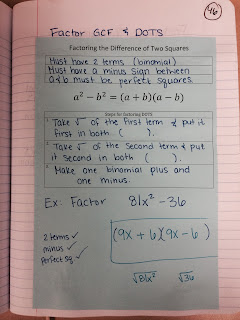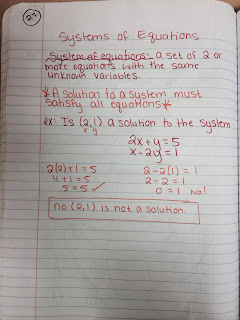First I introduced the parts of a radical, how to simplify them and what the prime numbers are you can break the composite numbers into. I got all of these things from Sarah at Math Equals love here.
The next thing we did was multiplying, adding and subtracting radicals. I believe we did these on a block day where we first took the notes on multiplying and did some practice with that and then came back to our notes for adding/subtracting and then their homework was just on add/subtract. These graphic organizers are also at the link above.
Dividing radicals notes are pretty boring with a few examples. Rationalizing the denominator was a little challenging for them.
Rational exponents are something the students are not a big fan of just because they see fractions and get scared. I got this graphic organizer from Math Equals Love here. The day we took these notes I had a warmup assignment where we practiced operations with fractions in preparation for these.
Solving rational equations came up next and we wrote down some steps but it was still pretty challenging for my Algebra 2 students. With the inequalities they often forgot to see if the answer gave a real expression.
Lastly for this unit is complex numbers. They were a nice thing to end with since the next unit is on quadratic equations. Again some fairly boring notes with nothing glued in. Overall my students did pretty well with imaginary numbers except rationalizing the denominator still kinda got them.
So I wish this was all my students were assessed on for this unit but it also included all the polynomial add/subtract/multiply/divide and factor problems as well. It was just too topics for them to be held responsible for at once. Next year I will fix that.
































































